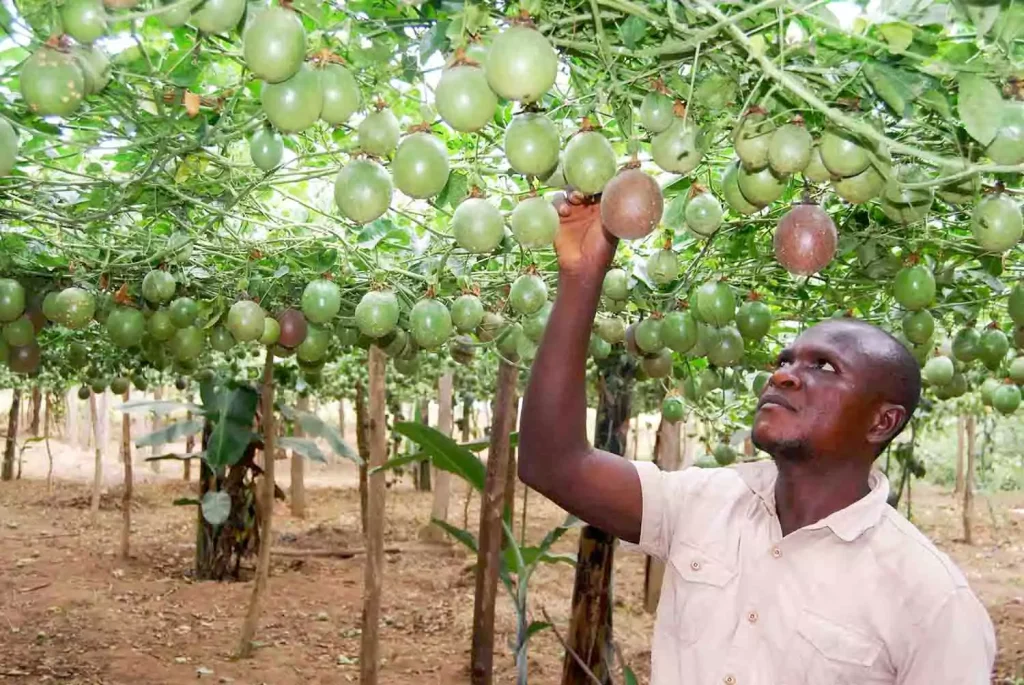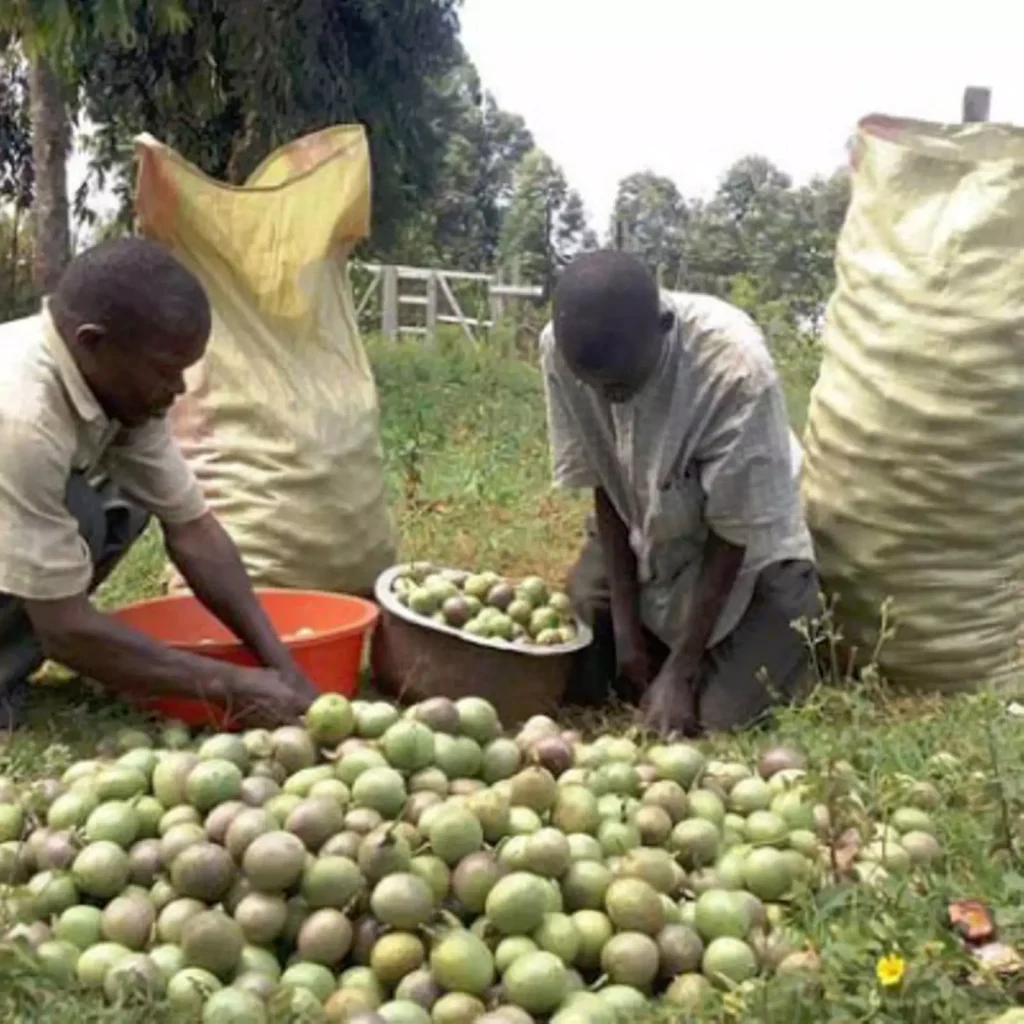
Background
Passion fruits is one of the most expensive and not common fruit on market. Its highly nutritious and mainly produced for juice processing.
Passion fruits are heavy feeders and sensitive to water logging therefore require deep, well drained fertile soils.
It grows best at PH 5.5-7. Needs more of Nitrogen, phosphorus, potassium, calcium and magnesium plus organic matter. (Its prudent that you test the soil to be sure about the availability of these nutrients and know what to add)

Establishment
1. Land Preparation
Passion fruits need to be planted in an open place direct sunlight. Remove all trees and bushes Do some ploughing to remove the unwanted vegetation.
2. Make the holes
Holes should be 2ft wide and 2ft deep. After making the holes, mix the top soil with half a basin of decomposed manure and fill back the hole.
3. Spacing
This should be 7*7ft at least for the purple variety. Meaning we shall make 734 holes in one Acre.
4. Planting
You can choose to buy ready seedlings at 1500Ushs each or make your own nursery bed. At planting, get your seedlings, apply some 50gms of DAP in the hole then put your seedling and cover well. Transplant during cool hours of the day to minimize transpiration shock.
Management Practices

1. Irrigation
Ensure that you irrigate in times of no rain to avoid water stress, stunted growth and drying if the foliage.
Keep enough moisture in the soil however don’t over irrigate as you may cause logging which is not good. You can use 10litre bottles and put a needle hole on them for dripping. It’s best to irrigate in the evening when it’s cool.
2. Fertilizer Application
Since passion fruits are heavy feeders, during the growing season they require a lot of nutrients like NPK and CAN and others.
Top dress with NPK 50gms per plant after the first 30days and repeat every after 30days for the first 4months.
Then after 5months ,apply 50gms of NPK +CAN mixed together every month.
Foliar fertilizers are to be done every after 2weeks with high Nitrogen in the Vegetative phase of 1-4months and high potassium in the production stage.
3. Weeding
Always make sure the garden is weed free to avoid nutrient computation and deficiency.
4. Pruning
This is a very important practice In the life of passion fruits, make sure you prun to allow sunlight and air to filter through the vine to help ripen the fruit. Pruning the dead and old branches that have already born fruit. It also allows new growth hence more flowering and fruiting.
5. Staking
Young vines are trained to grow along the wire support, Tie a thin rope near the base of the vines and move it around to the top. Then you can construct a Net bed of about 5-6ft high and allow the vines to grow and spread.
6. Pest Management & Control
Passion fruits if not monitored can easily be attacked by pests like thrips, root knot nematodes ,mites, and mealy bugs.
You can do spraying using recommended pesticides, removing of infected plants, plant resistant varieties, weeding and other cultural practices .
7. Harvesting and Marketing
From one acre of passion fruits if we’ll managed, you can harvest 2 sacks a week. You start harvesting at 6momths with good practices, then keep harvesting for over 17months
If each bag is 500k you can make 1M a week from one acre. a month 4M A year you can make 48Millions Ug shs
However this doesn’t come on a silver Plata ,passion fruits need a lot of attention and Supervision to easily monitor any challenge, the investment is also not small.
Contact us: For Soil Testing, Seedlings & Garden Setup
0782 905808
0753 734697
Email: info@sparkafrica.org
Website: www.sparkafrica.org

Leave a Reply